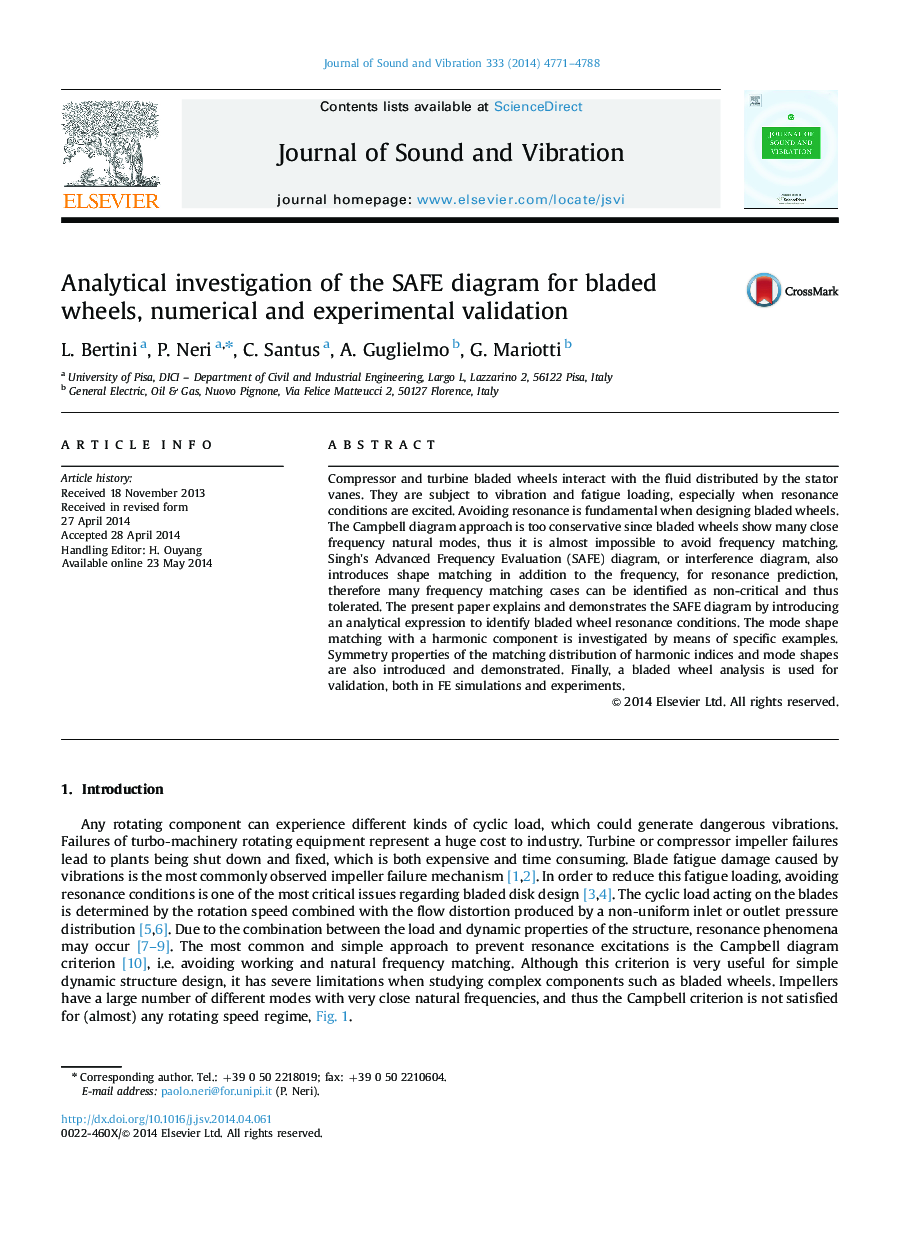| Article ID | Journal | Published Year | Pages | File Type |
|---|---|---|---|---|
| 287493 | Journal of Sound and Vibration | 2014 | 18 Pages |
•Complete derivation of the SAFE diagram.•Explanation of the maximum number of nodal diameters.•New analytical formulation of resonance shape matching condition.•Symmetry and periodicity of the matching map newly introduced and demonstrated.•FEM and experimental validations of the SAFE diagram predictions.
Compressor and turbine bladed wheels interact with the fluid distributed by the stator vanes. They are subject to vibration and fatigue loading, especially when resonance conditions are excited. Avoiding resonance is fundamental when designing bladed wheels. The Campbell diagram approach is too conservative since bladed wheels show many close frequency natural modes, thus it is almost impossible to avoid frequency matching. Singh׳s Advanced Frequency Evaluation (SAFE) diagram, or interference diagram, also introduces shape matching in addition to the frequency, for resonance prediction, therefore many frequency matching cases can be identified as non-critical and thus tolerated. The present paper explains and demonstrates the SAFE diagram by introducing an analytical expression to identify bladed wheel resonance conditions. The mode shape matching with a harmonic component is investigated by means of specific examples. Symmetry properties of the matching distribution of harmonic indices and mode shapes are also introduced and demonstrated. Finally, a bladed wheel analysis is used for validation, both in FE simulations and experiments.
